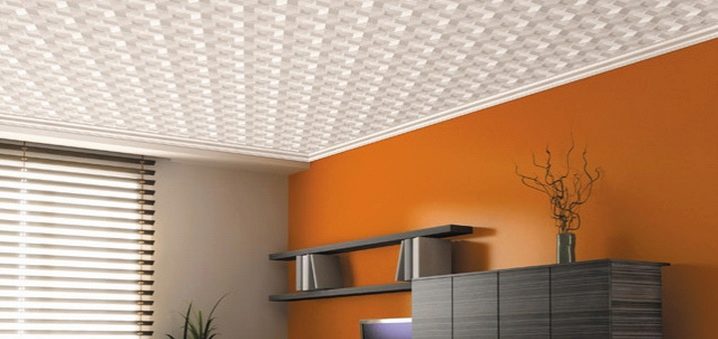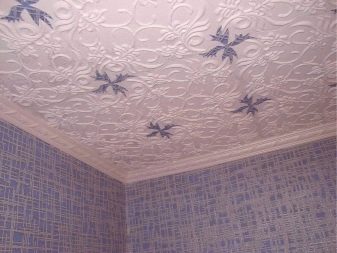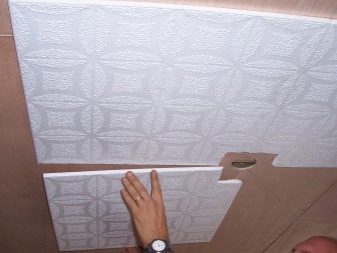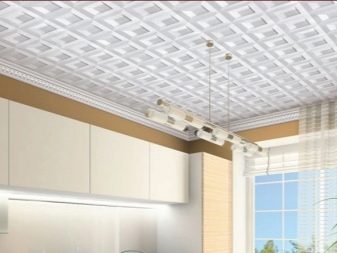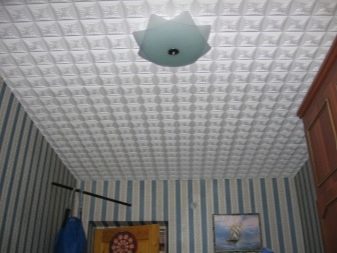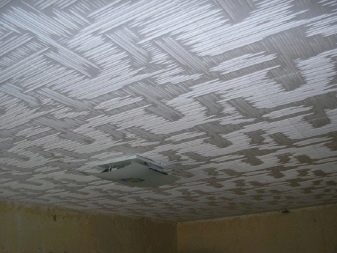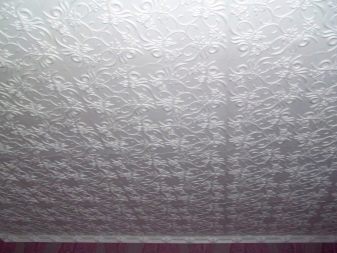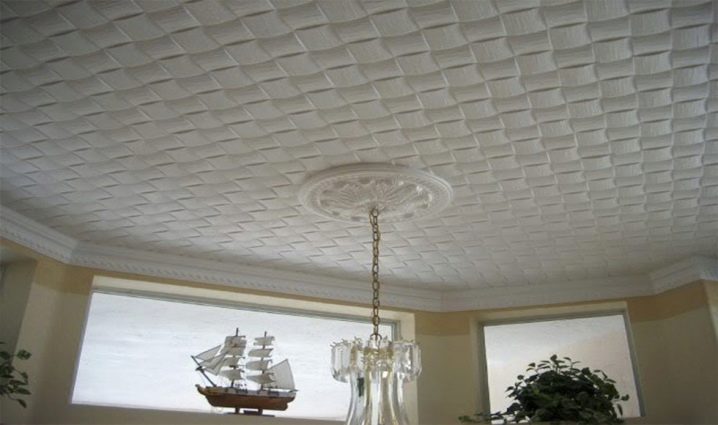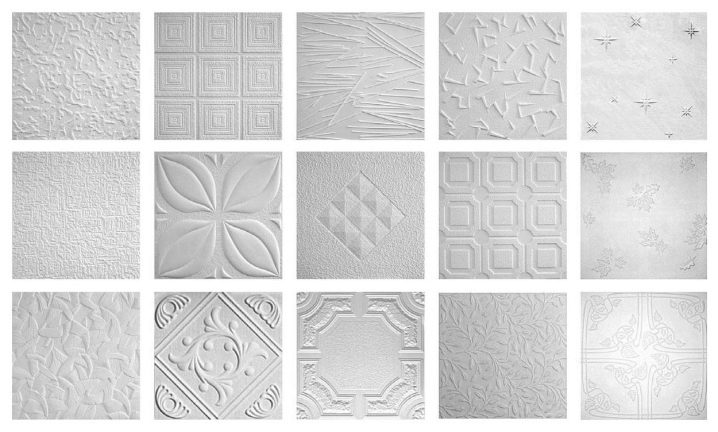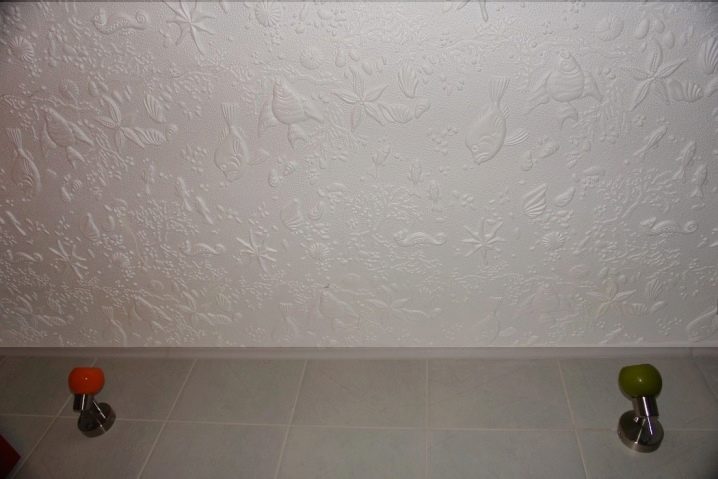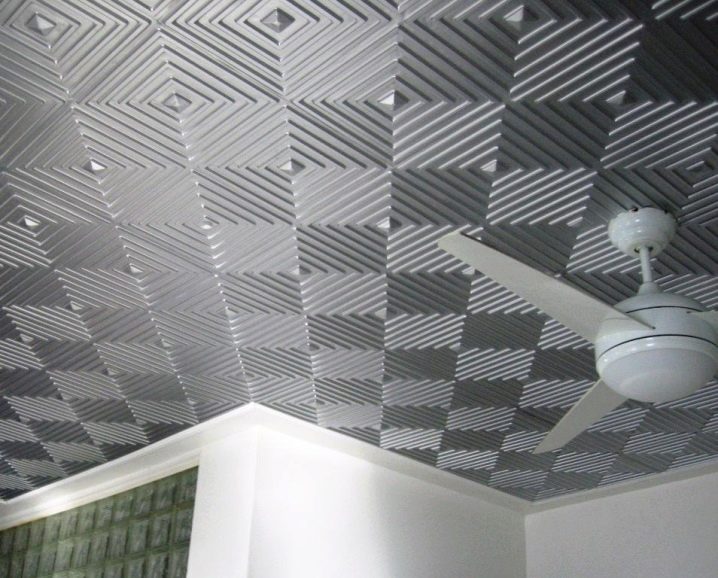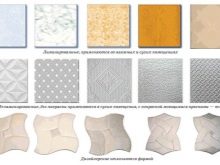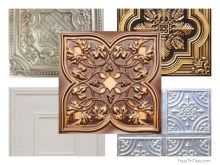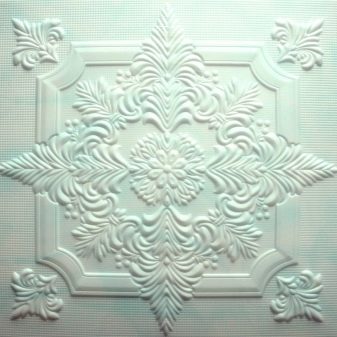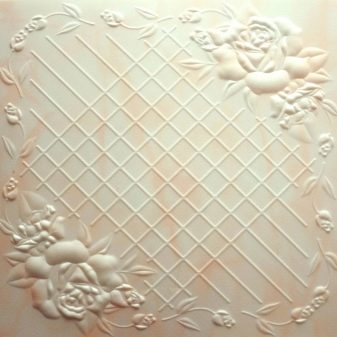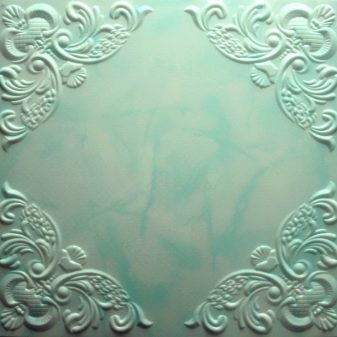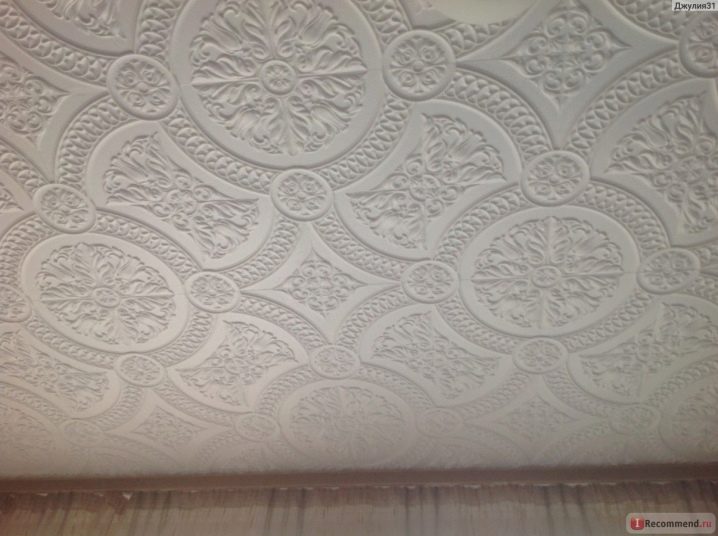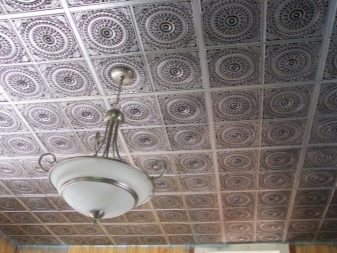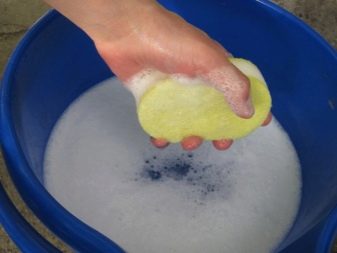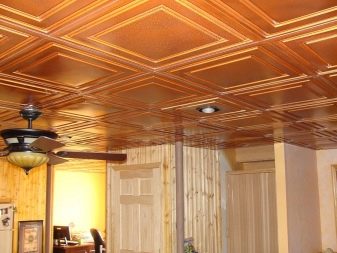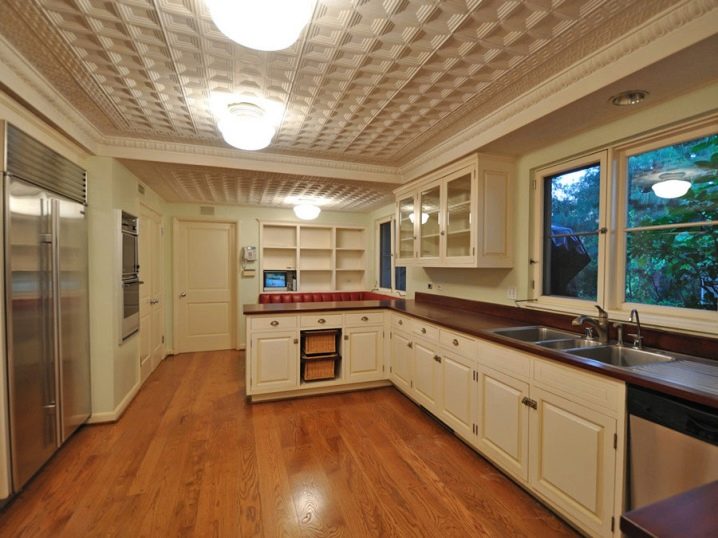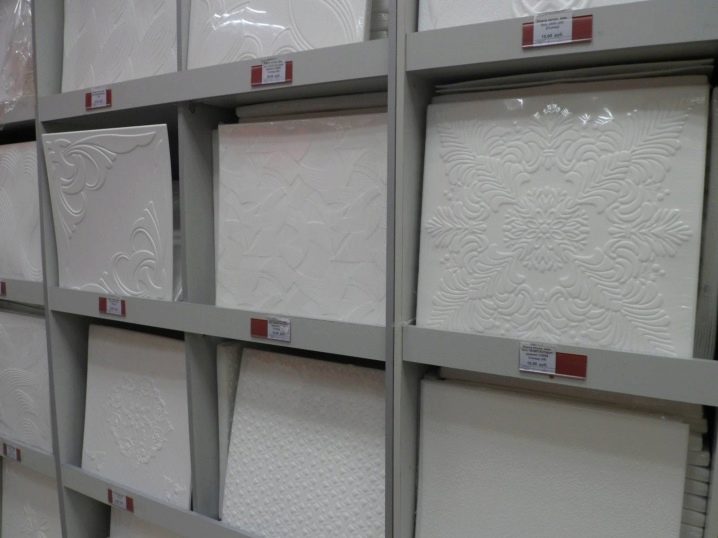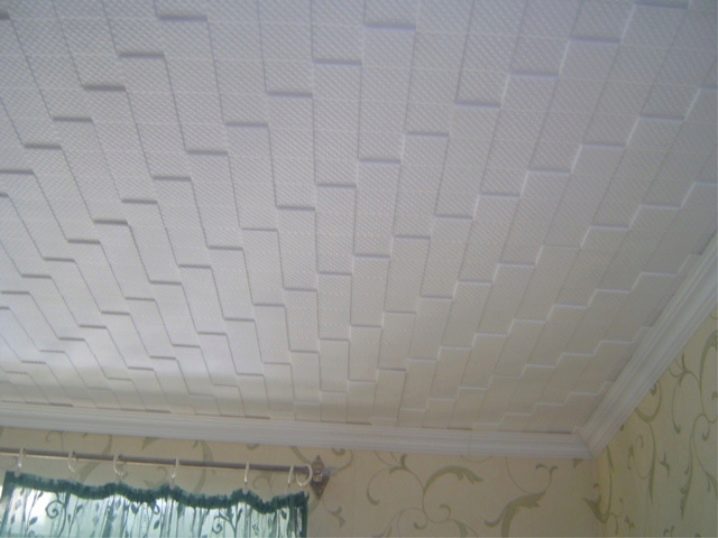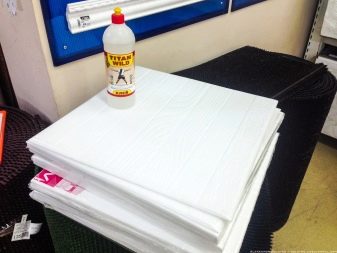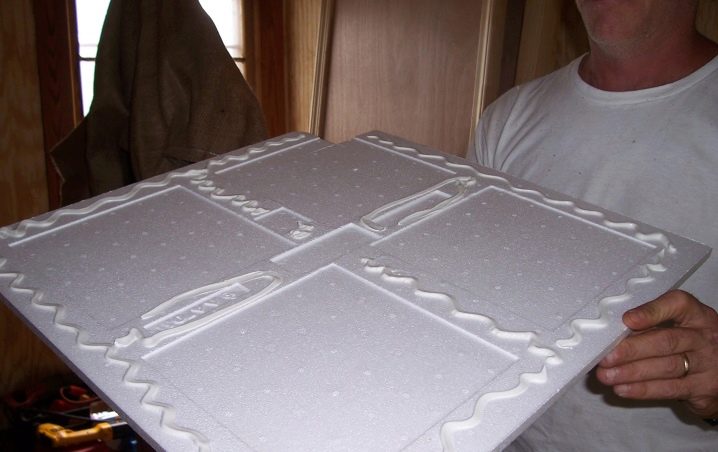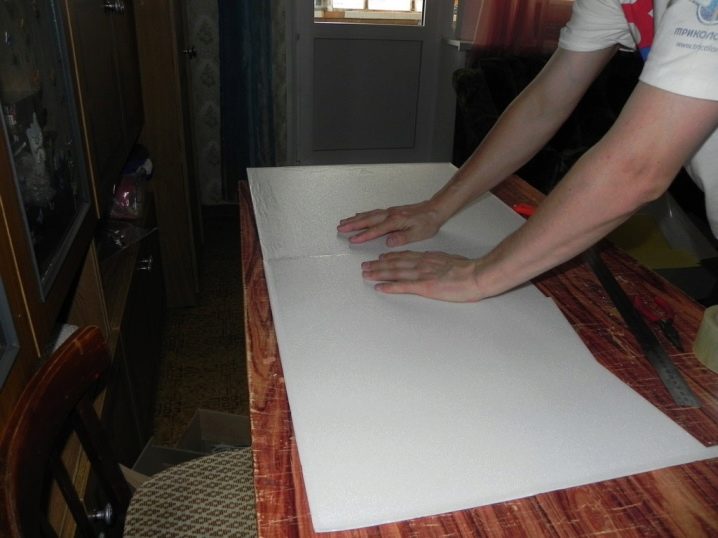Seamless ceiling tiles: distinctive features and varieties
Among the variety of finishing materials, some are distinguished by a combination of visual appeal and low prices. Let's talk about the distinctive features and varieties of seamless ceiling tiles.
Specifications
Seamless tile for ceiling decoration today is very popular. This is explained by the practicality, budget cost and other advantages of this material.
This variant of the ceiling coverings is presented by manufacturers in a large assortment. Among the variety of design you can find tiles for every taste. With regard to installation, it can be easily carried out independently.
The main feature of this finishing technology is the illusion of a single coating. The seams between the panels are almost invisible, so the ceiling is smooth and beautiful. At the same time, most models have an expressive relief, which makes the interior particularly interesting.
Plates are usually made of polystyrene. The material undergoes special processing. The result is thin and light squares with curved edges. The size of each tile is no more than 50 cm. They are glued easily and simply, without requiring professional skills.
Advantages and disadvantages
The advantages of ceiling tiles are obvious:
- Low price. The first thing that attracts attention is the affordable cost of the tile, especially when compared with other facing materials.
- Easy installation. You can save money not only on the purchase itself, but also on the installation work. Making the ceiling using this technology is possible without the services of specialists. You do not have to pre-bring the surface of the ceiling to the ideal, sealing up the smallest defects and distortions. The final coverage in any case will be visually even. In addition, due to the compact size of the panels with their laying can handle even one person.
- Practicality. The coating of this type does not "hide" the height of the room, in contrast to suspended or tension structures. Due to this feature, tiling is an ideal solution for apartments and houses with low ceilings.
- Heat and sound insulation. The material is able to provide additional protection from extraneous noise.
- Ease of care. The covering is easily cleared of pollution, without demanding special means.
- Aesthetic appeal. Optionally, you can choose the option with embossed patterns or a completely smooth model. A rich palette includes the classic white color, delicate pastel colors, bright options and even products with a color pattern. If necessary, such a ceiling can be painted manually. This allows you to harmoniously arrange any part of the house, including rooms, a corridor, a kitchen and even a bathroom.
There are few drawbacks to such a tile:
- She barely lets air through.
- With strong temperature variations, the coating may be deformed.
- The fragile structure requires careful handling of the material during installation and operation.
Kinds
Ceiling tiles are classified according to the method of manufacture.
Pressed
This type is the most popular. It is made from polystyrene foam. During stamping at high temperatures, the sheets of material become denser. The result is square tiles with a thickness of about 5-7 mm. The width of each of them is 50 cm.
In turn, polystyrene products are divided into several varieties:
- Tiles with curly edges. In this case, the ends of the products are made in the form of a wave or zigzag. This form allows the panels to more firmly dock with each other. The seams are practically invisible.
- Models with decorative fill. Every detail is decorated with a pattern that hides the errors of the docking.
- Products with grooved edges. Such panels are ideally interconnected due to carefully verified geometrical parameters and angles.
Injection
This type is more reliable and durable. In the process of manufacturing the material granules are glued together. The thickness of such products reaches 14 mm. The greater depth allows for a clearer textured pattern.
Extruded
Panels of this type have a thickness of not more than 3 mm.However, they are much stronger than the two varieties described above, which is explained by the special process of material production. Variants of drawings and textures are also varied. This realistic imitation of stucco, and the texture of textiles, and all sorts of color options.
Choosing between the three types of coverage, you should rely on financial opportunities. The most economical is the first, pressed form. It is quite suitable for concise room design.
If you want to get a more original textured ceiling, it is better to prefer the second or third look.
Design and texture
The design of seamless tiles is varied. This gives a lot of opportunities for interesting design.
For those who prefer classic and strict interiors, fit the smooth options. Such coatings never go out of fashion. If your decor is full of bright colors, a variety of textures and accessories, this option will also suit you. The ceiling of the unpretentious design will not distract attention from the interior features, allowing you to see every detail.
As for the volumetric textures of ceiling panels, these can be waves, geometric shapes, butterflies, stars,flower ornaments and so on. Moreover, the coating can imitate brickwork, stucco and other finishing materials. The drawing can be as relief as possible (3D effect) or only stand out slightly on a smooth surface.
As for color, most buyers prefer the classic white version. Such material refreshes the room, gives the interior lightness and airiness. The ability of white color to expand the space acts here, creating an atmosphere of spaciousness and freshness. For small areas such design will be the most optimal.
Sometimes white tiles are decorated with golden or silver glitter. This gives it a special chic. Also, pictures can be highlighted with a delicate shade or bright and dynamic color.
Some tile models are painted completely. Especially effectively it looks when imitating the texture of wood, marble or brick. The natural color of the imaged material enhances visual similarity.
Colored tiles are a little less popular, although it looks just as good as white. The beige version will suit lovers of quiet warm tones, and soft pink can decorate the girl's room.
Bright ceiling (red, blue, purple) - a bold decision.Such products are chosen by creative people inclined to experiment.
Manufacturers and reviews
Most of the buyers who have decorated their dwelling with ceiling tiles are satisfied with the result. The covering perfectly hides the curvature of the ceiling, without reducing the height of the room. Independent installation of the material does not require special skills. Panels are glued quickly and easily.
Pleases buyers and attractive appearance of the resulting coating, and the possibility of a wide selection of designs and colors. Many paint their own tiles, which is especially convenient when re-repairing. When upgrading the finishing room you do not need to remove the old tile and replace it with a new one. It is enough to cover the material with a layer of fresh paint, and the ceiling will shine fresh again.
The material is easy to use. Laminated surfaces can be washed with detergents, and models with a grainy texture are wiped with a dry cloth.
With regard to the disadvantages of this material, users note the ability of the surface to absorb odors and grease. Concerning in the kitchen it is recommended to use products without a pronounced texture that allow wet cleaning.
Also, in rooms with a tiled ceiling, it is not recommended to use flat chandeliers and lamps in order to avoid coating deformation. It is better to choose lighting devices that can be lowered at least 25 cm from the ceiling.
It is better to give preference to energy-saving or LED lamps, which, unlike conventional ones, heat up much less.
The most popular products from the expanded polystyrene company "Format". Buyers are satisfied with the quality of the panels and their appearance.
Many like the design of the tile company "Antares" however, upon closer examination of the brand’s products, a slight curvature of the edges can be seen. This makes it difficult to create an ideal cover, although not too fastidious owners claim that this does not spoil the overall appearance of the ceiling.
Speaking of foreign manufacturers, it is worth noting that Chinese products are less thick and of lower quality, but European brands usually delight customers with good products.
Tips for choosing
To make the purchase successful, you should pay attention to some important points:
- Ceiling tiles should be perfectly flat. Pay attention to the smoothness of the product, if it does not have a pattern. If there are textured patterns, check their clarity. Panels must not be deformed or chipped. The most important thing is to check the state of the edges of the material. The integrity of the final coating depends on the ideality of the edge.
- Important is not only the state of the front side of the plates. The reverse side must also be uniform and even. The presence of dents or protruding particles can affect the tightness of the material to the ceiling and its reliability.
- If possible, check the strength of products. Take one tile by the edge and hold it for a few seconds. If the material is not of high quality, it may crack.
Styling Features
The ceiling should be smooth and beautiful, for this tile you need to properly lay:
- For a start, it is worth calculating how many panels you will need to decorate a room. Divide the ceiling area by the area of one tile. To the amount received add another 10%. This is necessary in case you accidentally mess up a few. It also takes into account trimming products.
- Prepare the necessary elements for installation.In addition to the basic material you will need a plinth. It will allow you to carefully place the place at the junction of the wall and ceiling. A primer is useful for preparatory work, and glue is useful for the process of fixing panels. To make the markup, you need a few more items. This is a pencil, tape measure, level and plumb.
- Prepare the surface. The ceiling should not have strong distortions and large cracks. Align it with putty and prime. The smoother the surface, the easier it will be to stick the material, and the less glue you need.
- Make a markup. First mark the center point. Then through it draw two perpendicular lines.
- Then you can proceed to installation. The tile can be laid in two ways: strictly perpendicular to the walls or diagonally. In any case, the installation starts from the center point.
Glue is applied around the perimeter and diagonally of each panel. Then it is applied to the ceiling and tightly pressed, holding a hand for a couple of seconds. The following tiles are laid as tightly as possible to already glued products.
Make sure that there is no empty space between them.So you will achieve the illusion of a holistic coating that does not have seams.
In order for the panels not to “disperse” in different directions, they are best fastened together with masking tape. If glue has fallen on the front side of the coating, it is necessary to remove it immediately, not allowing drying. When all the tiles are glued, you can proceed to fixing the baseboard.
For information on how to properly lay and fix the ceiling tile, see the following video.
